Employee Warning Letter Template for Effective Communication
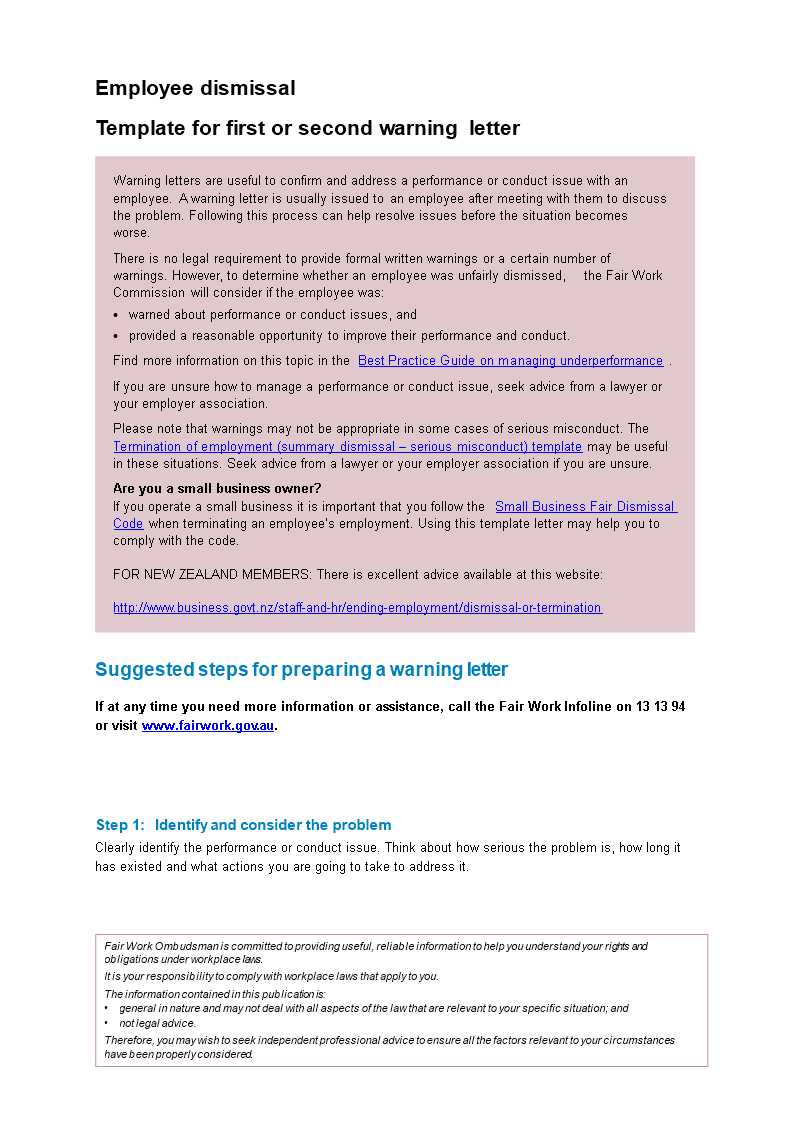
When addressing conduct or performance issues within a professional environment, it is essential to have a structured approach. A well-crafted written notice serves as a formal record of the matter at hand, providing clarity and ensuring that the situation is handled appropriately. This document helps maintain clear communication between management and staff, setting expectations and outlining any necessary corrective actions.
Key Elements to Include in a Formal Notice
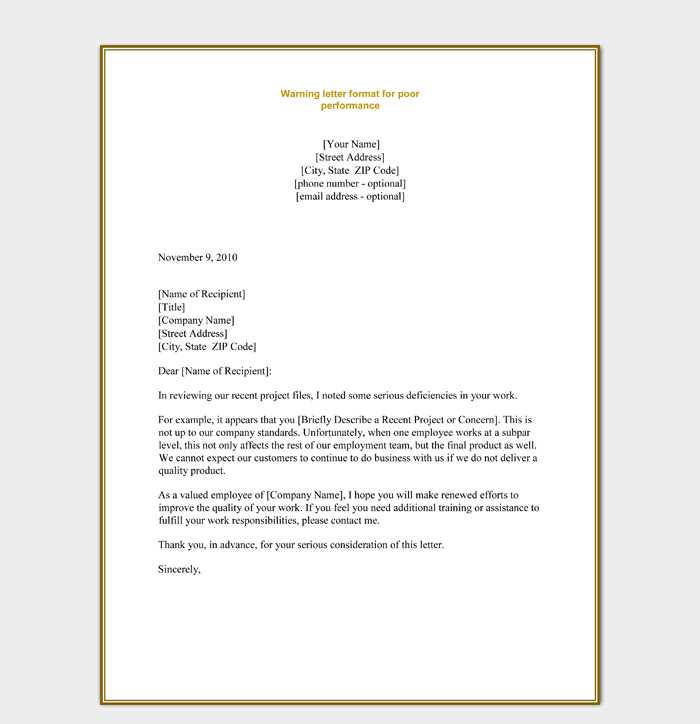
To ensure the document is effective, certain components are crucial. These elements not only convey the necessary information but also help prevent misunderstandings and potential legal issues:
- Clear Identification of the Issue: Describe the specific behavior or performance problem in detail.
- Previous Discussions: Include any prior conversations or warnings regarding the same matter.
- Consequences of Further Action: Explain the possible outcomes if the issue is not resolved.
- Expected Improvement: Clearly outline the steps the individual should take to correct the situation.
Customizing the Document for Your Needs
While many choose to use pre-made formats, it’s important to adapt the document to fit the particular situation. Personalizing the content ensures that all relevant details are covered and the tone remains appropriate for the severity of the issue.
Potential Pitfalls to Avoid
Writing such a document requires care. Avoid vague language or emotional statements, as they can lead to confusion or escalate tensions. Always focus on the facts and maintain a professional tone throughout.
Legal Considerations for Formal Notices
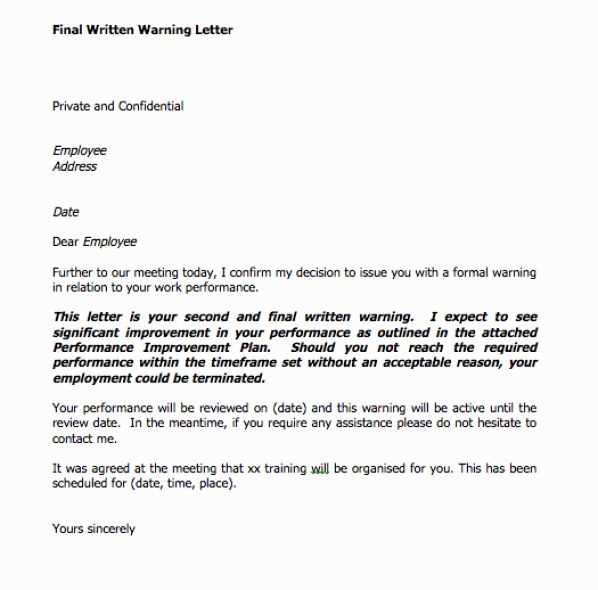
While creating this document, it’s important to be mindful of legal standards and company policies. Ensure that the content is compliant with employment laws to avoid any potential disputes. Keep records of all correspondence and actions taken to protect both the organization and the individual involved.
Effective Delivery Methods
The way the document is delivered is just as important as its content. Ensure that the individual receives the notice in a private and respectful manner. In some cases, it may be helpful to provide the document in person and have a follow-up conversation to ensure understanding.
Importance of Formal Notices in Employment
Key Elements of a Notice Format
How to Customize Your Document Layout
Common Mistakes in Drafting Formal Communications
Legal Aspects of Issuing Notices
Best Approaches for Delivering Notices
Formal notices serve as a key communication tool for addressing issues that require official documentation in the workplace. These documents not only provide a clear record of the situation but also ensure that both parties have a mutual understanding of expectations and consequences. Properly written notices contribute to resolving disputes, improving behavior, and maintaining a professional environment.
Key Elements of a Notice Format
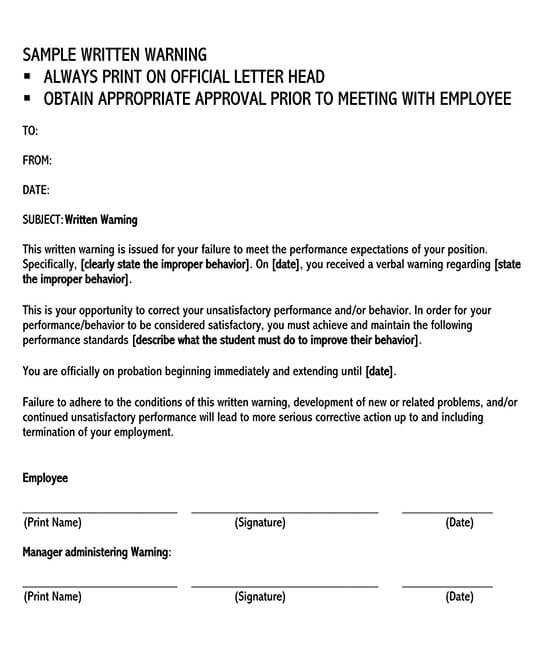
A well-constructed notice should include several essential components to ensure clarity and effectiveness:
- Detailed Description of the Issue: Specify the problem, including dates, actions, and the impact on the workplace.
- Previous Conversations: Reference any informal discussions or prior formal notices, if applicable.
- Corrective Actions: Clearly outline the steps the individual needs to take to address the issue.
- Consequences: Describe the potential outcomes if the situation does not improve.
How to Customize Your Document Layout
When creating this kind of communication, it’s important to adapt the format to the specific circumstances. Personalizing the document ensures that the tone is appropriate and all relevant information is included. Tailoring the content to the individual situation can also make the notice feel more sincere and constructive.
Common Mistakes in Drafting Formal Communications
It’s easy to make mistakes when preparing formal documents, but avoiding these common errors can make a significant difference:
- Vague Language: Avoid generalizations or unclear statements. Be specific about the behavior or performance issues.
- Emotional Tone: Keep the language neutral and professional. Avoid expressions that could escalate tensions.
- Lack of Specificity: Provide clear guidelines for improvement, with measurable goals if possible.
Legal Aspects of Issuing Notices
While writing and issuing formal communications, be sure to consider legal requirements. Employment laws vary by jurisdiction, and failing to follow them can lead to legal disputes. It’s essential to ensure the document is aligned with local labor regulations and organizational policies. Keeping a record of all notices and communications is also critical to avoid potential conflicts.
Best Approaches for Delivering Notices
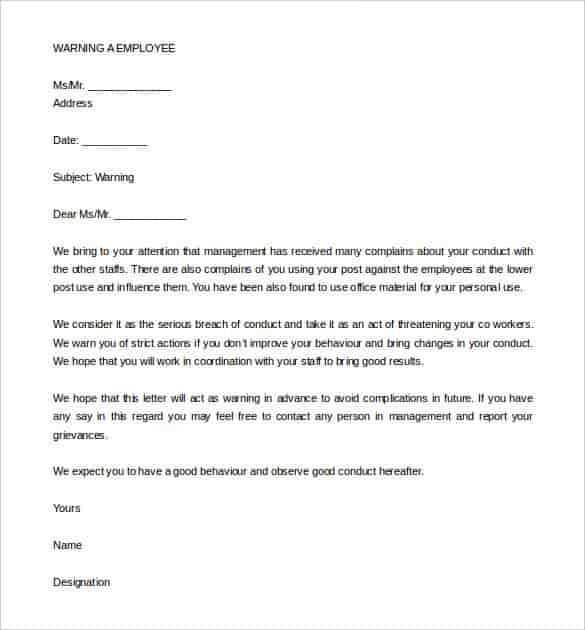
Delivering the formal notice with respect and professionalism is just as important as the content itself. Ensure the recipient is provided with the document in a confidential and appropriate manner. In some cases, it may be beneficial to schedule a private meeting to go over the contents and answer any questions they may have. This approach fosters understanding and maintains a positive relationship between both parties.